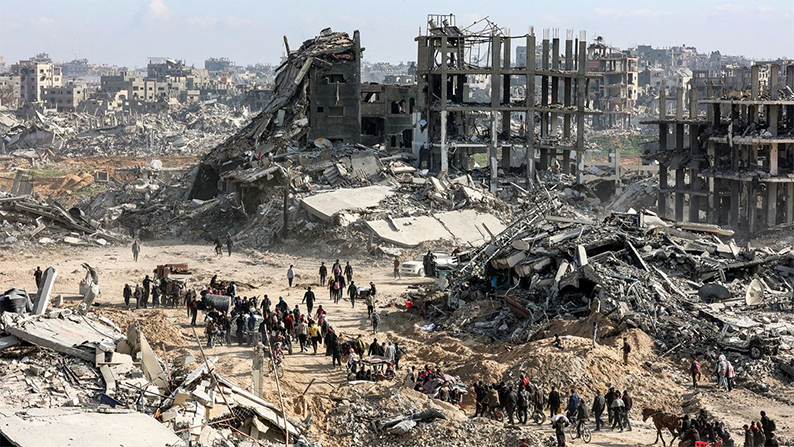
Spoiler alert. In Kurt Vonnegut’s Cat’s Cradle, the fictitious Caribbean island of San Lorenzo is ruled by dictator “Papa” Monzano; a fierce opponent of Bokononism. Indeed, Bokononists risk death by impalement if caught engaging in the cult’s most sacred ritual of rubbing the soles of their feet against those of fellow devotees. But here’s the thing. “Papa” Monzano, it turns out, is himself a secret Bokononist …
Sound familiar? That’s likely because you’ve cottoned on to the nature of America’s relationship with Islamic State. Which brings us naturally enough to the massacre at Moscow’s Crocus City Hall on March 23.
The nearest thing to a smoking gun linking Kiev – ipso facto Washington – to that crime is the location where the perpetrators, four Tajik migrant workers in Moscow who have all confessed under enhanced interrogation, were apprehended.
This from the Times of India:
A Tajik terrorist, allegedly involved in the Moscow terror attack, was caught by Russian forces after an intense chase in the woods near the Ukraine border. The Russian forces detained 11 people including all the four terrorists involved in the attack. Russia’s FSB later claimed that the terrorists tried to flee Moscow via Russia-Ukraine border and even alleged Ukraine’s involvement in the terror attack. Ukraine President Zelenskyy, however, dismissed the claims and said Russia is trying to blame others. The deadly terror attack at Moscow’s concert killed 133 and injured over 120.
No one to my knowledge disputes that the arrests were made near the Ukrainian border. The New York Times concedes this as a “fact”, while minimising it and hastily moving on:
… Putin used the fact that the highway where the men were detained leads to Ukraine to suggest that the attack was somehow linked to Ukraine’s war effort. But the United States has said repeatedly that the attack was the work of an extremist jihadi organization, the Islamic State, which claimed responsibility.
NYT allows that “the highway leads to Ukraine” – and that this might enable a mind as warped as Mr Putin’s to “somehow” link the crime to Kiev – but neglects to add that the Tajiks were not just on that highway but close to the border. This is a surprising direction of travel; either for violent Islamists who, we’ve long been told, neither expect nor want to survive, or for hired goons we’d think would flee anywhere but the world’s most heavily guarded border.
Unless, of course, they believed a place of safety lay on the other side, with prior arrangements in place to take them to it.
But already I’m speculating; a task we’re spared when there’s a smoking gun. One may emerge in the fulness of time – the Russians already have more hard information than is usual in these cases – but unless and until it does, we have to look to circumstantial evidence.
I’ve now watched several hours of worthy commentary, including but not confined to former CIA analyst Larry Johnson, ex British diplomat Alastair Crooke and former US Marine Intelligence Officer turned UN Weapons Inspector Scott Ritter. All merit a viewing, and Scott shows not for the first time his deep empathy with the Russian people. But for a balance of scope and depth, with thirty-six minute concision, I’m going with Brian Berletic, the former US Marine who blogs from Bangkok with calm, informed and highly structured presentations.
Over to you Brian for why, short of conclusive and irrefutable proof, Washington has to be the prime suspect for this heinous crime against innocent civilians.
*
Since posting I’ve come across this on Russia expert Gilbert Doctorow’s site.
Update on the Crocus terror attack
Day by day, the Russian security officials are expanding upon their claims that Ukraine financed and directed the terror attack on the Crocus City Hall concert venue. Sunday evening’s edition of News of the Week hosted by Dmitry Kiselyov pointed to crypto currency payments and other financial channels which were used by the Ukrainians, as the latest results of interrogations and further arrests have revealed. A substantial success reward is said to have awaited the assailants upon arrival in Kiev.
Meanwhile various Western media outlets including Deutsche Welle tell us the Kremlin has demanded the hand-over of the head of Kiev’s Security Service (SSB), brigadier general Vasyl Malyuk on charges of directing terrorist attacks in Russia. To be sure, Malyuk himself has claimed responsibility for the 2022 bombing of the Kerch (Crimea) bridge. But we may now assume that the Russians have evidence to hold him to account for directing the Crocus City Hall atrocity.
There is speculation in social media that Kiev’s refusal to surrender its terror campaign leaders would allow Russia to declare Ukraine a terrorist state. This would open the possibility for ‘neutralizing’ top Ukrainian officials on justifiable grounds.
However, we need not speculate about what may come next. De facto, Russia’s current offensive against Ukraine has escalated to a new, vastly more threatening level. There are daily punishing aerial bombing and missile attacks on military command centers across Ukraine, on training centers, on concentrations of foreign mercenaries. And then there is a new dimension to the destruction of Ukraine’s electricity network.
In the winter of 2022-2023, all the Western media spoke of Russian attacks on the energy infrastructure, on how Russia was allegedly seeking to impose misery on the Ukrainian civilians by depriving them of heat and light in the midst of freezing cold. But back then the reality was that Russia only struck substations and other distribution points. Such destruction was meant to knock out power for tactical advantage over the Ukrainian armed forces. It was obvious that the substations and other gear could be replaced in a matter of weeks or months. By contrast what is now going on is Russian destruction of power generating stations. Replacing them will be a matter of years, not months.
Very much to the point, the mayor of Kharkiv yesterday remarked to the press that the city’s power supplies have been utterly destroyed. This development corresponds very nicely to the calls that were made on the Evening with Vladimir Solovyov talk show last week for Kharkiv’s inhabitants to be sent packing in their cars headed west ahead of the city being razed to the ground. The intent was to end once and for all the missiles and artillery shells that Kharkiv has been sending daily into the neighboring Belgorod region of Russia to kill civilians in the greatest numbers possible. Kharkiv may not yet be razed, but it certainly is on the way to becoming uninhabitable.
In the face of this massive and undeniable destruction by the Russians both on and off the battlefield, the bravado of Zelensky and his clique is fading. Indeed, the Ukrainian president has finally said publicly that it may be time for peace negotiations.
Let us hope that Russia’s post Crocus viciousness may bring the Ukrainians to their senses and end this awful war.
* * *
